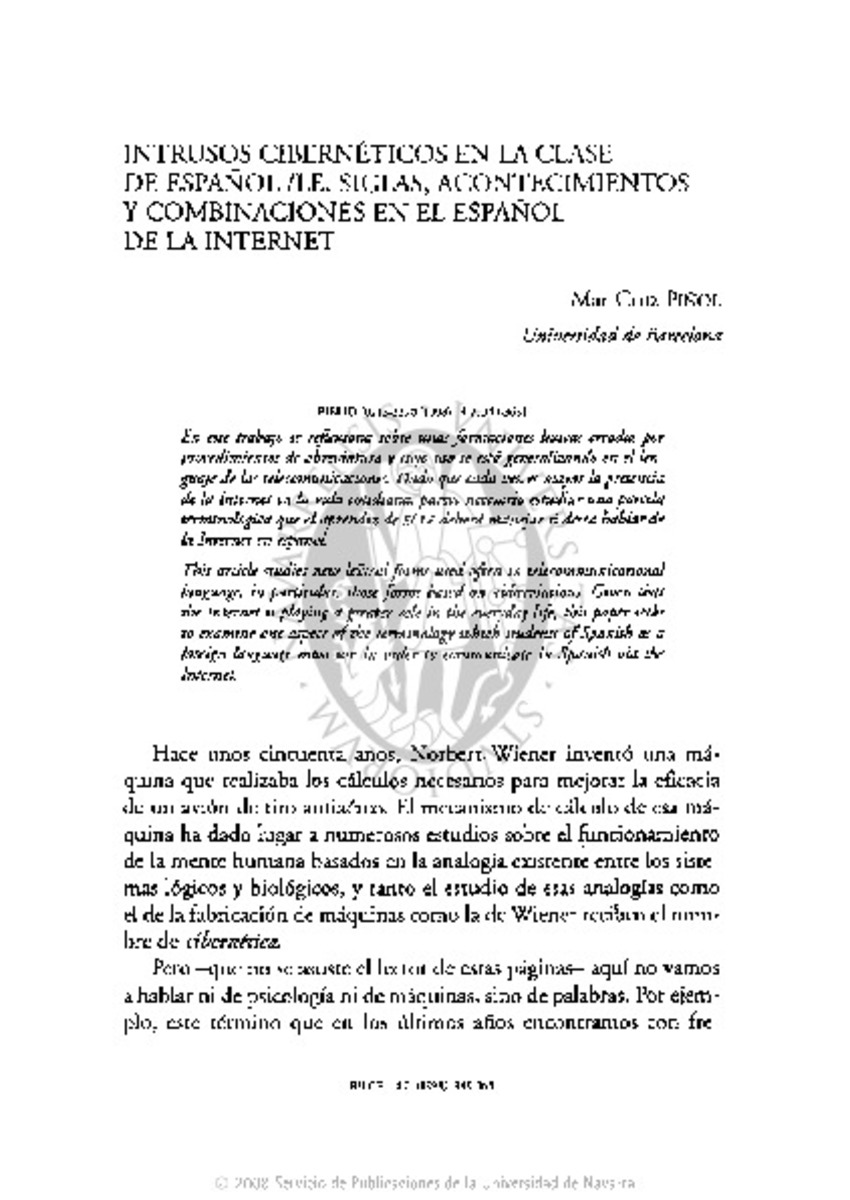Full metadata record
| DC Field | Value | Language |
|---|---|---|
| dc.creator | Cruz-Piñol, M. (Mar) | |
| dc.date.accessioned | 2009-10-08T15:32:13Z | - |
| dc.date.available | 2009-10-08T15:32:13Z | - |
| dc.date.issued | 1998 | - |
| dc.identifier.citation | Rilce 14.2 (1998): 349-365 | es_ES |
| dc.identifier.uri | https://hdl.handle.net/10171/4363 | - |
| dc.description.abstract | En este trabajo se reflexiona sobre unas formaciones léxicas creadas por procedimientos de abreviatura y cuyo uso se está generalizando en el lenguaje de las telecomunicaciones. Dado que cada vez es mayor la presencia de la Internet en la vida cotidiana, parece necesario estudiar una parcela terminológica que el aprendiz de E/LE deberá manejar si desea hablar de la Internet en español. This article studies new lexical forms used often in the language of telecommunications, in particular, those forms based on abbreviations. Given that the Internet is playing a greater seeks to examine one aspect of the terminology that students of Spanish as a foreign language must use in order to communicate in Spanish via the Internet. | es_ES |
| dc.language.iso | spa | es_ES |
| dc.publisher | Servicio Publicaciones Universidad de Navarra | es_ES |
| dc.rights | info:eu-repo/semantics/openAccess | es_ES |
| dc.subject | Léxico, español/LE, Internet | es_ES |
| dc.subject | Lexis, Spanish/FL | es_ES |
| dc.title | Intrusos cibernéticos en la clase de español/LE. Siglas, acortamientos y combinaciones en el español de la Internet | es_ES |
| dc.type | info:eu-repo/semantics/article | es_ES |
| dc.identifier.doi | 10.15581/008.14.26981 | es_ES |
Files in This Item:
Statistics and impact
Items in Dadun are protected by copyright, with all rights reserved, unless otherwise indicated.






